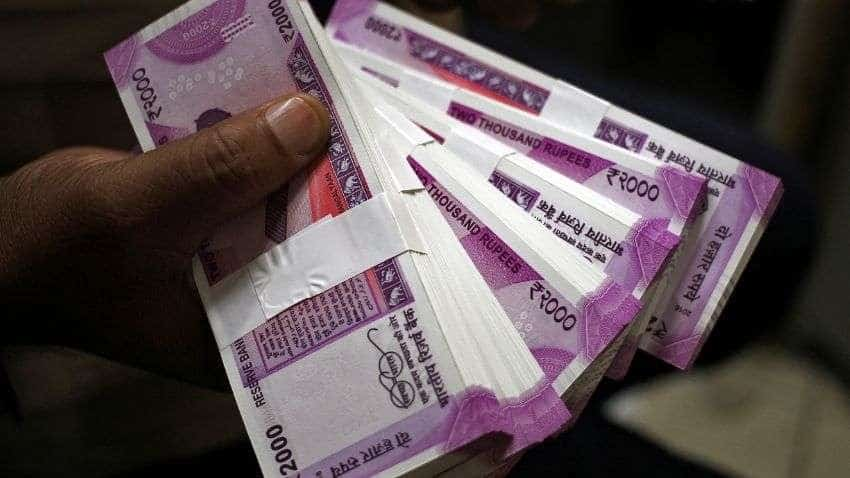Microfinance sector: India Ratings revises upwards outlook to 'neutral' from 'negative' for FY23
India Ratings has revised upwards its outlook on the microfinance sector to 'neutral' from 'negative' next fiscal, on the back of a revival in growth that could clip at 30 per cent.

India Ratings has revised upwards its outlook on the microfinance sector to 'neutral' from 'negative' next fiscal, on the back of a revival in growth that could clip at 30 per cent.
See Zee Business Live TV Streaming Below:
The agency expects the sector to grow 20-30 per cent in both FY22 and FY23 in comparison to the below 10 per cent AUM (assets under management) growth in the previous two years. Given the yield limitations, mid- and small-MFIs have not seen comparable growth.
While large MFIs will continue with their normal disbursement trends and new customer acquisitions as normalisation happens in FY22 and FY23, small- and mid-ones will ramp up their activities once the harmonisation guidelines are implemented.
The agency see that the impact of the pandemic on credit cost has been largely absorbed by now, and there is a likelihood of normalised growth for these small lenders. Also, their collections, especially those disbursed after the pandemic, have recovered and refinance has become relatively easy now.
Another booster is the increased viability expectations for small-mid MFIs after the implementation of harmonisation guidelines, as they can now revise their lending rates, which will improve pre-provision operating profit margins and provide higher tolerance to withstand credit cost, the report said.
The agency expects the credit cost to decline to a median of 1.5-5 per cent in FY23 from 4-7 per cent in FY22 as collections are better since December and it will be lower than FY22. The decline would largely be a function of growth, provision coverage and recovery from restructured loans.
MFIs in states such as Assam, Bengal and Kerala, and specific districts of Maharashtra and Gujarat where there was delayed easing of lockdown restrictions under both the waves along with other regional issues will see higher slippages, though especially those that have provided longer moratoriums.
Under the current interest rate pricing cap, small and mid MFIs have been vulnerable to credit shocks. They are facing the challenges of availability of credit and adverse cost of borrowings even amid declining interest rates. One of the key objectives of harmonisation is to address this. Consequently, MFIs may be able to undertake risk-based pricing as well as cost-plus pricing, leading to improved viability of small and
medium players and aid them in building both scale and operating buffers, and increase their credit worthiness.
In the past 15 months, even mid and small players have managed to refinance existing debt compared to the FY17 to 1HFY21 period, supported by government guarantees to banks for on-lending to MFIs.
The agency expects large players to continue to avail of financing from Q4 onwards, and small MFIs would have it relatively easy once the harmonisation guidelines are implemented.
Get Latest Business News, Stock Market Updates and Videos; Check your tax outgo through Income Tax Calculator and save money through our Personal Finance coverage. Check Business Breaking News Live on Zee Business Twitter and Facebook. Subscribe on YouTube.
RECOMMENDED STORIES

Small SIP, Big Impact: Rs 1,111 monthly SIP for 40 years, Rs 11,111 for 20 years or Rs 22,222 for 10 years, which do you think works best?

Rs 3,500 Monthly SIP for 35 years vs Rs 35,000 Monthly SIP for 16 Years: Which can give you higher corpus in long term? See calculations
07:48 PM IST









 Piramal Group arm Piramal Alternatives invests Rs 600 crore in this microfinance company
Piramal Group arm Piramal Alternatives invests Rs 600 crore in this microfinance company Moneyboxx Q1 results: Reports Rs 1.6 crore profit
Moneyboxx Q1 results: Reports Rs 1.6 crore profit Microfinance loan portfolio rises by 22% to Rs 3.48 lakh crore in FY23
Microfinance loan portfolio rises by 22% to Rs 3.48 lakh crore in FY23 MFI sector portfolio rises 21% in FY'23
MFI sector portfolio rises 21% in FY'23 Microfinance institutions set for better days, as collection improves, loan sales jump
Microfinance institutions set for better days, as collection improves, loan sales jump